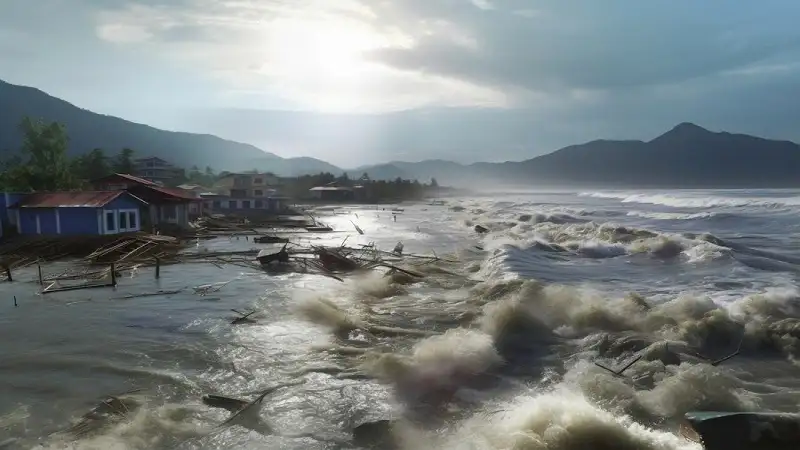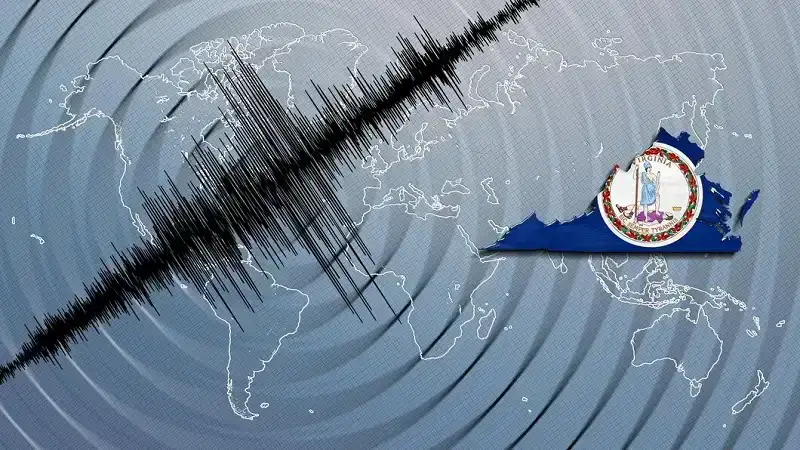On Sunday night, a powerful earthquake struck deep in the sea. Measuring a magnitude of 6.8, this quake sent shockwaves through nearby coastal areas. The “6.8 Magnitude Earthquake Strikes In Sea On Sunday Night” is a significant geological event. It raises questions about the aftermath, potential damage, and what might come next. This article explores the details of the quake, its effects on nearby regions, and the responses from local authorities.
Understanding Earthquakes: How They Happen
Earthquakes are caused by tectonic plate movements. These plates constantly shift, sometimes creating friction as they collide. When stress between plates is released, the energy creates seismic waves, causing the ground to shake. In the case of the “6.8 Magnitude Earthquake Strikes In Sea On Sunday Night,” the quake occurred underwater, likely along a fault line.
Types of Earthquakes
- Tectonic Earthquakes: These are the most common caused by plate movements.
- Volcanic Earthquakes: Result from volcanic activity.
- Collapse Earthquakes: Often caused by cave-ins or landslides.
This earthquake is classified as tectonic, given its deep-sea location.
Location and Depth: Where the Quake Struck
The earthquake struck miles below the sea’s surface, minimizing its direct impact on land. The depth of an earthquake affects the spread of its energy. A deeper earthquake, like the “6.8 Magnitude Earthquake Strikes In Sea On Sunday Night,” typically results in less surface shaking but can affect a wider area.
Importance of Depth in Earthquake Impact
Deeper earthquakes distribute energy across a larger area. Shallower earthquakes, by contrast, can cause intense shaking close to the surface. Due to the depth of this particular earthquake, damage on land was less severe.
Measuring Magnitude: What Does 6.8 Mean?
The Richter Scale measures earthquake magnitude, with each increase in number indicating a tenfold increase in power. A 6.8 magnitude quake is classified as strong. A 6.8 magnitude earthquake struck the sea on Sunday night, shaking nearby coastal towns but, fortunately, causing minimal destruction.
Magnitude Scale Breakdown
- 4.0 – 4.9: Light earthquake, often unnoticed by most.
- 5.0 – 5.9: Moderate, causing minor damage.
- 6.0 – 6.9: Strong, with potential for moderate to severe damage.
- 7.0+: Major earthquake, causing significant destruction.
The recent quake, at 6.8, sits just below the threshold for a major earthquake.
Nearby Areas Affected: Which Regions Felt the Tremors?
Even though the 6.8 magnitude earthquake struck underwater, it sent tremors that reached several coastal areas. Communities near the sea reported light shaking. Some coastal buildings swayed slightly, while others experienced minimal damage.
Reports from Affected Regions
- Fishing Villages: Many fishermen noticed unusual wave patterns.
- Coastal Towns: Residents reported feeling light tremors.
- Tourist Destinations: Minor disruptions in services but no significant impact.
Most areas only felt slight vibrations, which was fortunate given the quake’s strength.
The Role of Seismologists: How They Track Earthquakes

Seismologists study earthquakes and predict their behavior. Using seismographs, they track tremors and measure magnitudes. When the “6.8 Magnitude Earthquake Strikes In Sea On Sunday Night,” seismologists quickly monitored and recorded its impact.
Tools for Tracking Earthquakes
- Seismographs: These measure ground movements.
- GPS Technology: Tracks plate shifts over time.
- Satellites: Provide data on tectonic changes.
With these tools, scientists identified the earthquake’s origin, depth, and intensity within minutes of the event.
Tsunami Warnings: Assessing the Risk After the Earthquake
Underwater earthquakes often lead to tsunami alerts. Waves from the quake can push seawater toward coastal areas, leading to potential flooding. After the “6.8 Magnitude Earthquake Strikes In Sea On Sunday Night,” authorities issued a brief tsunami warning, though it was later lifted.
How Tsunami Warnings Are Triggered
Seismologists assess the quake’s magnitude and depth. If it can disturb the seabed, they issue a warning. In this case, the depth and pattern of the tremor prompted them to issue a precautionary alert. They advised nearby areas to be cautious, but they reported no major waves.
Local Responses: How Communities Prepared
Local governments activated emergency protocols. Coastal areas encouraged residents to remain alert, and emergency teams were put on standby. The quick response to the “6.8 Magnitude Earthquake Strikes In Sea On Sunday Night” reassured residents and ensured readiness for any possible aftershocks or secondary effects.
Key Response Measures
- Public Alerts: Warning systems notified residents.
- Evacuation Readiness: Some coastal towns are prepared for possible evacuations.
- Emergency Resources: Authorities gathered supplies and personnel.
Thanks to these preparations, communities were ready to face any additional impact.
The Impact on Marine Life: Potential Consequences Below the Surface
Earthquakes can disturb underwater ecosystems, impacting marine life. Strong quakes may change the seafloor, affecting coral reefs, fish habitats, and migration patterns. While the full effect of the “6.8 Magnitude Earthquake Strikes In Sea On Sunday Night” is still unknown, experts are investigating potential impacts on the local ecosystem.
Observed Effects on Marine Life
Marine biologists are observing fish behaviors, which may change due to the quake’s shockwaves. Certain species are sensitive to disturbances, which can alter their movement and breeding cycles. Experts will continue to monitor to understand the quake’s full ecological impact.
The Role of Early Warning Systems in Reducing Risk
Early warning systems are essential for minimizing earthquake damage and casualties. These systems can detect seismic waves and alert authorities. When the “6.8 Magnitude Earthquake Strikes In Sea On Sunday Night,” these systems provided crucial data for tsunami risk assessment and public safety measures.
Components of an Effective Early Warning System
- Seismic Sensors: Detect ground movements instantly.
- Communication Networks: Quickly distribute alerts to authorities and the public.
- Response Protocols: Help emergency teams react fast.
By giving coastal communities a heads-up, these systems reduce panic and aid in organized responses.
Preparing for Future Earthquakes: Community and Government Actions
While this quake had a limited impact on land, it served as a reminder to prepare for future events. Coastal towns are reviewing their preparedness plans. The “6.8 Magnitude Earthquake Strikes In Sea On Sunday Night” encourages communities to strengthen response strategies and improve resilience.
Key Preparation Steps
- Building Reinforcements: Structures near coastlines should be earthquake-resistant.
- Evacuation Plans: Ensure efficient evacuation routes.
- Public Education: Teach residents how to stay safe during earthquakes.
Communities are focusing on these strategies to prepare for possible future earthquakes.
Conclusion: Lessons from the Earthquake Event
The “6.8 Magnitude Earthquake Strikes In Sea On Sunday Night” highlights the importance of awareness and preparedness. While it didn’t result in major damage, it served as a reminder of the earth’s unpredictable nature. Through effective response systems and public readiness, communities can better withstand these natural occurrences.
